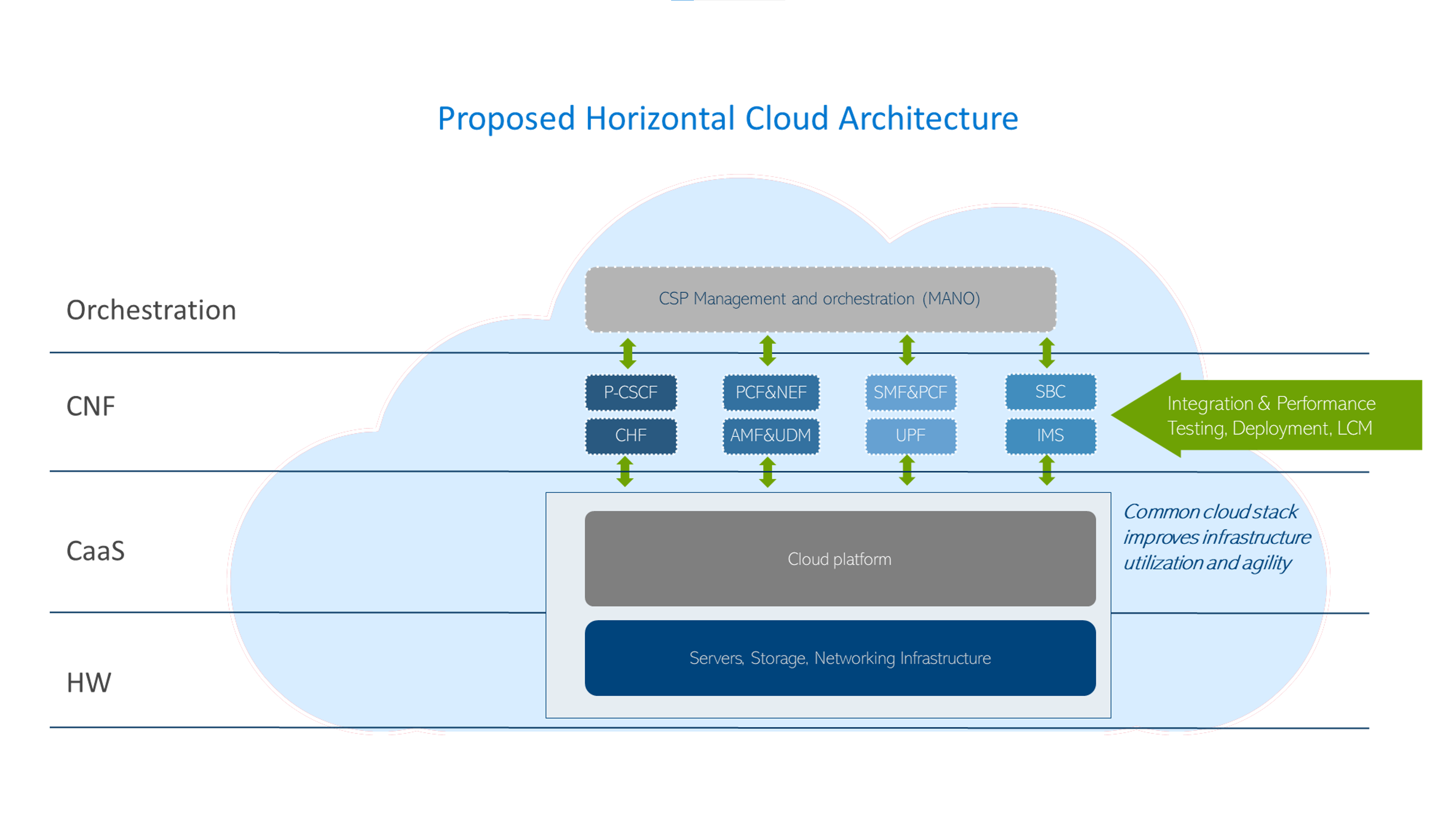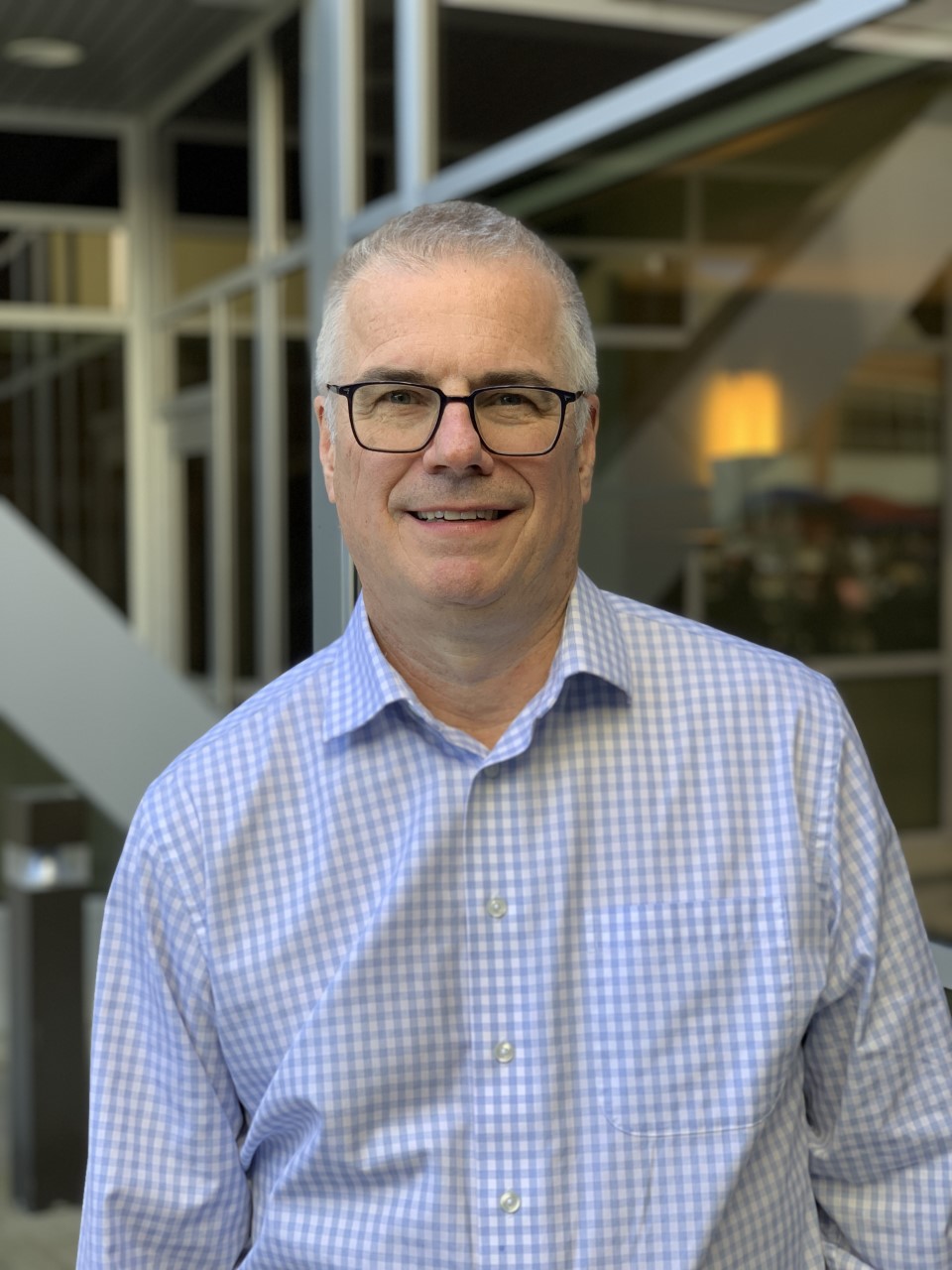

Cloud-native or Bust: Telco Cloud Platforms and 5G Core Migration
Thu, 25 Apr 2024 16:23:22 -0000
|Read Time: 0 minutes
Breaking down barriers with an open, disaggregated, and cloud-native 5G Core
As 5G network rollouts accelerate, communication service providers (CSPs) around the world are shifting away from purpose-built, vertically integrated solutions in favor of open, disaggregated, and cloud-native architectures running containerized network functions. This allows them to take advantage of modern DevSecOps practices and an emerging ecosystem of telecom hardware and software suppliers delivering cloud-native solutions based on open APIs, open-source software, and industry-standard hardware to boost innovation, streamline network operations, and reduce costs.
To take advantage of the benefits of cloud-native architectures, many CSPs are moving their 5G Core network functions onto commercially available cloud native application platforms like Red Hat OpenShift, the industry's leading enterprise Kubernetes platform. However, building an open, disaggregated telco cloud for 5G Core is not easy and it comes with its own set of challenges that need to be tackled before large scale deployments.
In an disaggregated network, the system integration and support tasks become the CSP's responsibility. To achieve their objectives for 5G, they must:
- Accelerate the introduction and management of new technologies by simplifying and streamlining processes from Day 0, network design and integrations tasks, to Day 1 deployment, and Day 2 lifecycle management and operations.
- Break down digital silos to deploy a horizontal cloud platform to reduce CapEx and OpEx while lowering power consumption
- Deploy architectures and technologies that consistently meet strict telecom service level agreements (SLAs).
Digging into the challenges of deploying 5G Core network functions on cloud infrastructure
This will be a five-part blog series that addresses the challenges when deploying 5G Core network functions on a telco cloud.
- In this first blog, we will highlight CSPs’ key challenges as they migrate to an open, disaggregated, and cloud-native ecosystem;
- The next blog will explore the 3GPP 5G Core network architecture and its components;
- The third blog in the series will discuss how Dell Technologies is working with Red Hat to streamline operator processes from initial technology onboarding through Day 2 operations when deploying a telco cloud to support core network functions;
- The fourth blog will focus on distributing User Plane functionality from the centralized data center to the network edge, so operators can create a more scalable and flexible 5G network environment;
- The final blog in the series will discuss how Dell is integrating Intel technology that consistently meets CSP SLAs for 5G Core network functions.
Accelerating the introduction and simplifying the management of 5G Core network functions on cloud infrastructure
Cloud native architectures offer the potential to achieve superior performance, agility, flexibility, and scalability, resulting in easily updated, scaled, and maintained Core network functions with improved network performance and lower operational costs. Nevertheless, operating 5G Core network functions on a telco cloud can be difficult due to new challenges operators face in integration, deployment, lifecycle management, and developing and maintaining the right skill sets.
Different integration and validation requirements
Open multi-vendor cloud-native architectures require the CSP to take on more ownership of design, integration, validation, and management of many complex components, such as compute, storage, networking hardware, the virtualization software, and the 5G Core workload that runs on top. This increases the complexity of deployment and lifecycle management processes while requiring investment in development of new skill sets.
Complexity of the deployment process demands automation
5G Core deployment on a telco cloud platform can be a complex process that requires integrating multiple systems and components into a unified whole with automated deployment from the hardware up through the Core network functions. This complexity creates the need for automation that not only to streamlines processes, but also ensures a consistent deployment or upgrade each time that aligns with established configuration best practices. Many CSPs may lack deployment experience with automation and cloud native tools making this a difficult task.
Lifecycle management and orchestration of a disaggregated 5G Core
The size and complexity of the 5G Core can make lifecycle management and orchestration challenging. Every one of the components starts a new validation cycle and increases the risk of introducing security vulnerabilities and configuration issues into the environment.
Lack of cloud-native skills and experience
Managing a telco cloud requires a different set of skills and expertise than operating traditional networks environments. CSPs often need to acquire additional staff and invest in cloud native training and development to obtain the skills and experience to put cloud native principles into practice as they build, deploy, and manage cloud-native applications and services.
Breaking down vertical silos with a horizontal, 5G telco cloud platform
In recent years, many CSPs embarked on a journey away from vertically integrated, proprietary appliances to virtualized network functions (VNFs). One of the goals when adopting network functions virtualization was to obtain greater freedom in selecting hardware and software components from multiple suppliers, making services more cost-effective and scalable. However, CSPs often experiences difficulties in designing, integrating and testing their individual stacks, resulting in higher integration costs, interoperability issues and regression testing delays leading to less efficient operations.
Despite efforts to move to virtualized network functions, silos of vertically integrated cloud deployments can emerge where the virtual network functions suppliers define their own cloud stack to simplify their process of meeting the requirements for each workload. These vertical silos prevented CSPs from pooling resources, which can reduce infrastructure utilization rates and increase power consumption. It also increases the complexity of lifecycle management as each layer of the stack for each silo needs to be validated whenever a change to a component of the stack is made.
 Vertically integrated 5G Core stack on a telco cloud
Vertically integrated 5G Core stack on a telco cloud
CSPs are now looking to implement a horizontal platform that can provide a common cloud infrastructure to help break down these silos to lower costs, reduce power consumption, improve operational efficiency, and minimize complexity allowing CSPs to adopt cloud native infrastructure from the core to the radio access network (RAN).
 Horizontal platform for 5G telco workloads
Horizontal platform for 5G telco workloads
Maintaining compliance with telecom industry SLAs
Creating and managing a geographically dispersed telco cloud based on a broad range of suppliers while consistently adhering to CSP SLAs takes a lot of effort, resources and time and can introduce new complications and risks. To meet these SLAs and accelerate the introduction of new technologies, CSPs will need a novel approach when working with vendors that reduces integration and deployment times and costs while simplifying ongoing operations. This will include developing a tighter relationship with their supply base to offload integration tasks while maintaining the flexibility provided by an open telecom ecosystem. As an example, Vodafone recently introduced a paper outlining their vision for a new operating model to improve systems integrations with their supply base to help achieve these objectives. It would also include following a proven path in enterprise IT by adopting engineered systems, similar to the converged and hyper converged systems used by IT today, that have been optimized for telecom use cases to simplify deployment, scaling and management.
Short-term total cost of ownership (TCO)
When it comes to optimizing short-term TCO, there are several options available to CSPs. One such option is to work closely with vendors in order to reduce integration, deployment times and costs while simplifying ongoing operations. This approach can help CSPs leverage the expertise of vendors who specialize in the software and hardware components required for a disaggregated telco cloud. By working with skilled vendors, CSPs can reduce the risk of validating and integrating components themselves, which can lead to cost savings in the short term.
Another option that CSPs can consider is to adopt a phased approach to implementation. This involves deploying disaggregated telco cloud technologies in stages, starting with the most critical components and gradually expanding to include additional components over time. This approach can help to mitigate the initial costs associated with disaggregated telco cloud adoption while still realizing the benefits of increased flexibility, scalability, and cost efficiency.
CSPs can also take advantage of initiatives like Vodafone's new operating model for improving systems integrations with their supply base. This model aims to simplify the process of integrating components from multiple vendors by providing a standardized framework for testing and validation. By adopting frameworks like this, CSPs can reduce the time and costs associated with integrating components from multiple vendors, which can help to optimize short-term TCO.
Although implementing a disaggregated telco cloud can increased investment in the short term, there are several options available to CSPs for optimizing short-term TCO. Whether it's working closely with trusted vendors, adopting a phased approach, or leveraging standardized frameworks, CSPs can take steps to reduce costs and maximize the benefits of a disaggregated telco cloud.
Your partners for simplifying telco cloud platform design, deployment, and operations
Dell and Red Hat are leading experts in cloud-native technology used in building 5G networks and are working together to simplify their deployment and management for CSPs. Dell Telecom Infrastructure Blocks for Red Hat is a solution that combines Dell's hardware and software with Red Hat OpenShift, providing a pre-integrated and validated solution for deploying and managing 5G Core workloads. This offering enables CSPs to quickly launch and scale 5G networks to meet market demand for new services while minimizing the complexity and risk associated with deploying cloud-native infrastructure.
Next steps
In the next blog we will dive deeper into the the service-based architecture of the 5G Core architecture and how it was developed to support cloud native principles. To learn more about how Dell Technologies and Red Hat are partnering to simplify the deployment and management of a telco cloud platform built to support 5G Core workloads, see the ACG Research Industry Directions Brief: Extending the Value of Open Cloud Foundations to the 5G Network Core with Telecom Infrastructure Blocks for Red Hat.
Authored by:
Gaurav Gangwal
Senior Principal Engineer – Technical Marketing, Product Management
About the author:
Gaurav Gangwal works in Dell's Telecom Systems Business (TSB) as a Technical Marketing Engineer on the Product Management team. He is currently focused on 5G products and solutions for RAN, Edge, and Core. Prior to joining Dell in July 2022, he worked for AT&T for over ten years and previously with Viavi, Alcatel-Lucent, and Nokia. Gaurav has an Engineering degree in Electronics and Telecommunications and has worked in the telecommunications industry for about 14+ years. He currently resides in Bangalore, India.

Kevin Gray
Senior Consultant, Product Marketing – Product Marketing
About the author:
Kevin Gray leads marketing for Dell Technologies Telecom Systems Business Foundations solutions. He has more than 25 years of experience in telecommunications and enterprise IT sectors. His most recent roles include leading marketing teams for Dell’s telecommunications, enterprise solutions and hybrid cloud businesses. He received his Bachelor of Science in Electrical Engineering from the University of Massachusetts in Amherst and his MBA from Bentley University. He was born and raised in the Boston area and is a die-hard Boston sports fan.





